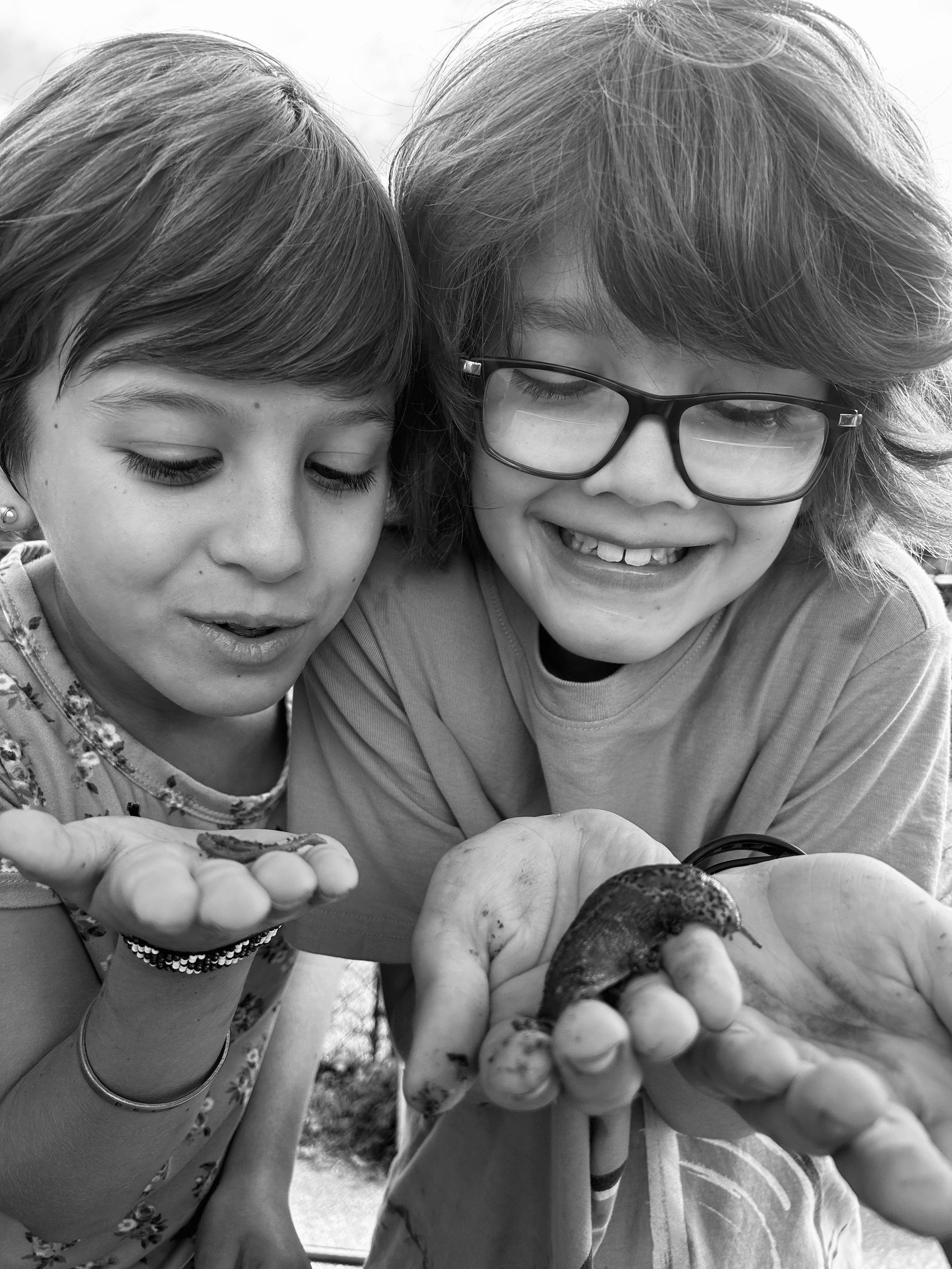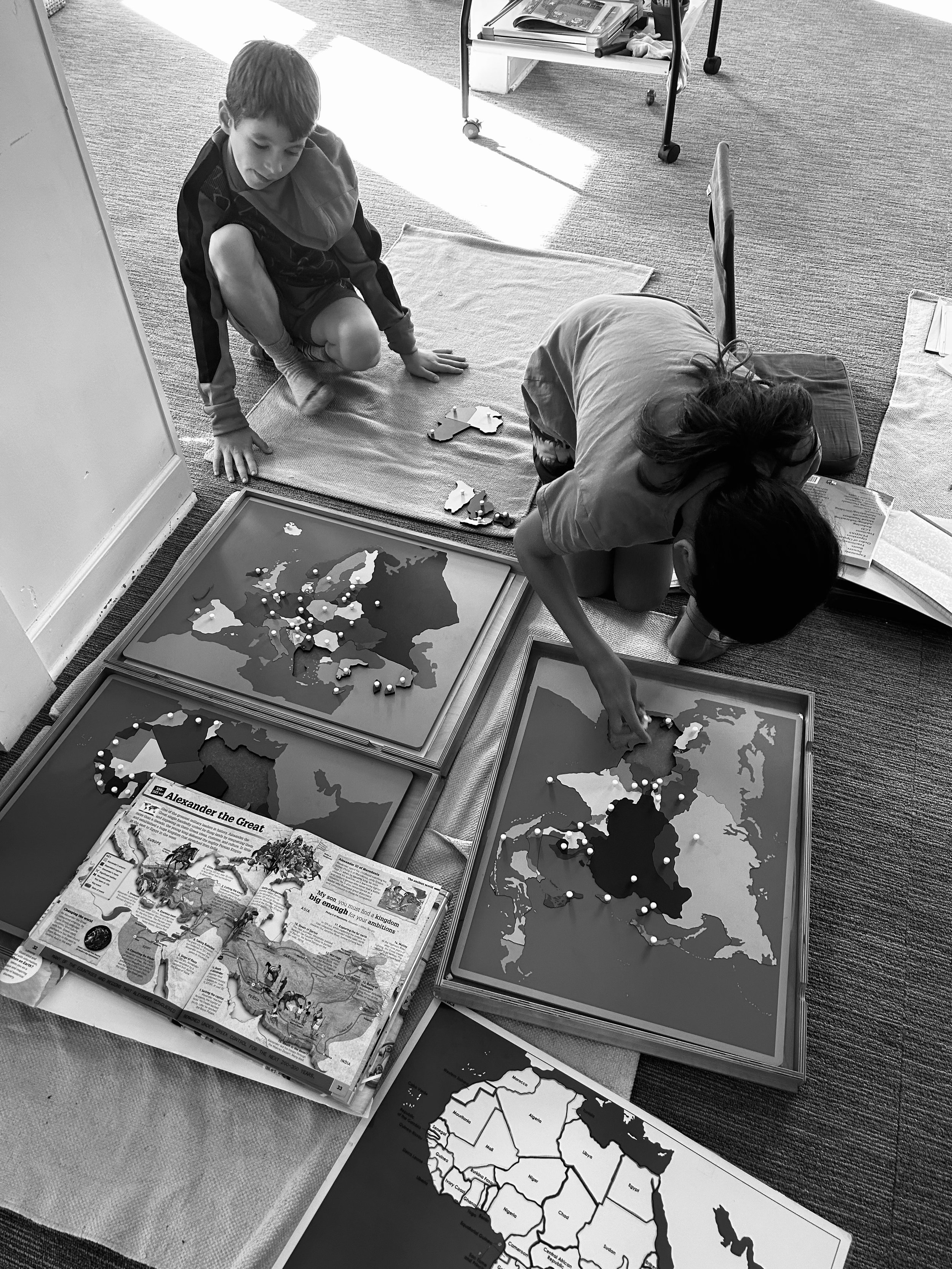
Academics & Learning
Whole Child Education
At Friends-Montessori School, we practice a holistic education based on the many different areas of the child’s personal growth: academic, social, emotional, & spiritual development. We strive to create an interconnected learning experiences in which the child & adults alike can work to build up our authentic, integrated selves.
Academics
Mathematics
The Montessori approach to mathematics allows the child to move beyond mere memorization of facts & formulas, instead, working to develop the child’s “mathematical mind.” Children are guided through a series of specially designed didactic materials that progress increasingly from concrete to abstract to form mathematical understandings & associations typically reserved for more advanced math learners. The materials aid the child in forming a deep base of knowledge that is both visual & kinesthetic in addition to their developing conceptual understanding. The materials gradually increase in complexity & over time, make way for pure logical & abstract reasoning.
In the elementary years, mathematics is divided into two major categories: arithmetic & geometry. Arithmetic focuses primarily on numeracy, place value, & the four operations: addition, subtraction, multiplication, & division. As the child progresses beyond these fundamentals, they begin applying their knowledge to more advanced work in squaring & cubing, square roots & cube roots, fractions & decimal operations, & algebraic thinking. Geometry lessons consist primarily of developing an understanding of geometric nomenclature & the recognition of forms, figures & their relationships to one another. Eventually, children explore the materials to develop an understanding of geometric formulas that may be applied abstractly. Practical mathematics, such as money, time, & measurement, are also learned throughout the elementary years.
Language Arts
Like mathematics, the study of language arts provides a key to unlocking all other areas of learning. Our work in language begins with children developing or improving their reading & writing skills through the development of phonetic awareness & comprehension. In the 6-9 classroom, special attention is placed on grammar & learning parts of speech, as well as building vocabulary & formulating descriptive sentences & paragraphs with appropriate mechanics & punctuation. These skills develop in tandem with the child’s independent research & cultural studies & are used to compose various reports occasionally presented to the rest of the class.
Language work in the 9-12 years continues building upon the child’s grammatical learning & adds in detail a comprehensive study of sentence analysis. Children learn to diagram increasingly complex sentences, parsing out grammatical structures in an effort to increase understanding & literacy. A more in-depth study of etymology also leads to a greater comprehension of written materials across subjects & a greater command of language in personal & academic writing. Children are also exposed to various literature in which discussions of style, meaning, & intent are explored, among others.
Sciences
The study of science begins with the beginning itself: the formation of the universe & the evolution of life. From there, students explore throughout the elementary years by story & study many areas of scientific understanding: physical science, ecology, botany, zoology, anatomy, geology, & more. The study of science moves from broad to specific, big ideas to tiny details. Topics are reintroduced many times throughout the child’s time in the classroom, each time with greater detail & deeper understanding.
Our study of sciences centers around the interconnectedness of life & the interdependencies between the elements of the universe. Science provides us opportunities to bask in wonder & reflect on the big, cosmic queries such as: who are we? where do we come from? why are we here? We explore our role as stewards of the environment & our responsibilities as members of a greater ecosystem.
Much of our science work stems from whole group lessons & also independent research. Broad topics are presented in both Elementary I & Elementary II levels, with children branching out into their interests & studies afterwards.
History & Geography
The Montessori approach to history and geography fosters a deep understanding of the world by guiding children through a progression from the concrete to the abstract. Rather than memorizing isolated facts, children engage with hands-on materials and storytelling to develop a meaningful connection to the past, an awareness of the present, and a curiosity about the future. These studies help cultivate a sense of time, place, and cultural appreciation, allowing students to see themselves as part of a larger human story.
In the elementary years, history and geography are explored through an integrated, interdisciplinary approach. History begins with The Great Lessons, a series of impressionistic stories that introduce the origins of the universe, the formation of the Earth, the development of life, and the rise of human civilizations. These lessons spark curiosity and provide a foundation for deeper study. Students investigate timelines, historical figures, and fundamental needs of humans across different cultures and time periods, helping them recognize patterns and connections throughout history.
Geography in the Montessori classroom is both physical and cultural. Children start by exploring the Earth’s structure, landforms, and the forces that shape the planet. Through hands-on materials like puzzle maps, globes, and landform models, they develop an understanding of continents, countries, and geographic relationships. As they progress, they study climate, ecosystems, and the impact of geography on human societies, deepening their understanding of how people interact with and adapt to their environments.
By integrating history and geography, Montessori education encourages children to develop a global perspective, a sense of responsibility, and an appreciation for the interconnectedness of all people and places. These studies not only provide academic knowledge but also inspire a lifelong curiosity about the world and our place within it.
Peace Education
Take a minute to write an introduction that is short, sweet, and to the point. If you sell something, use this space to describe it in detail and tell us why we should make a purchase. Tap into your creativity. You’ve got this.








